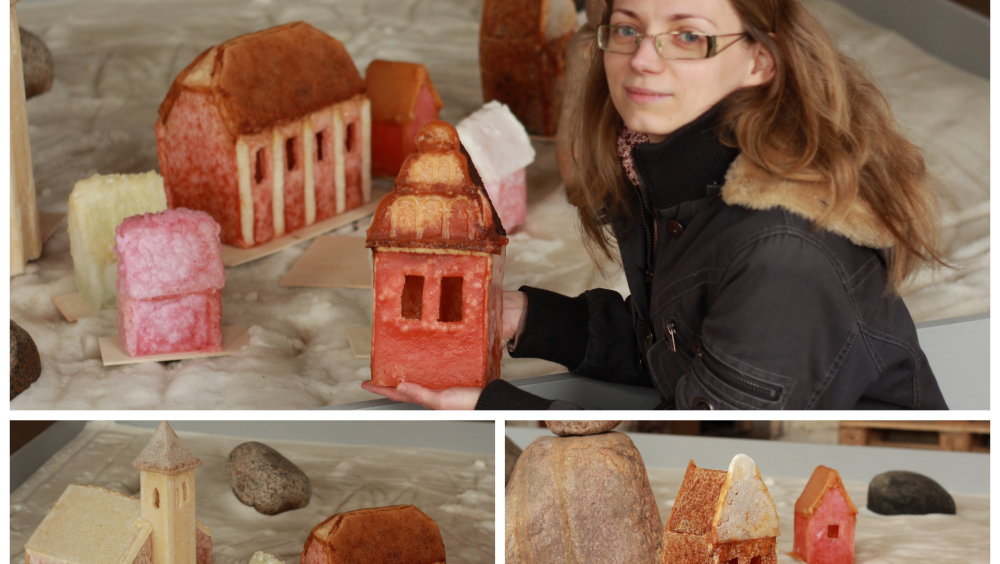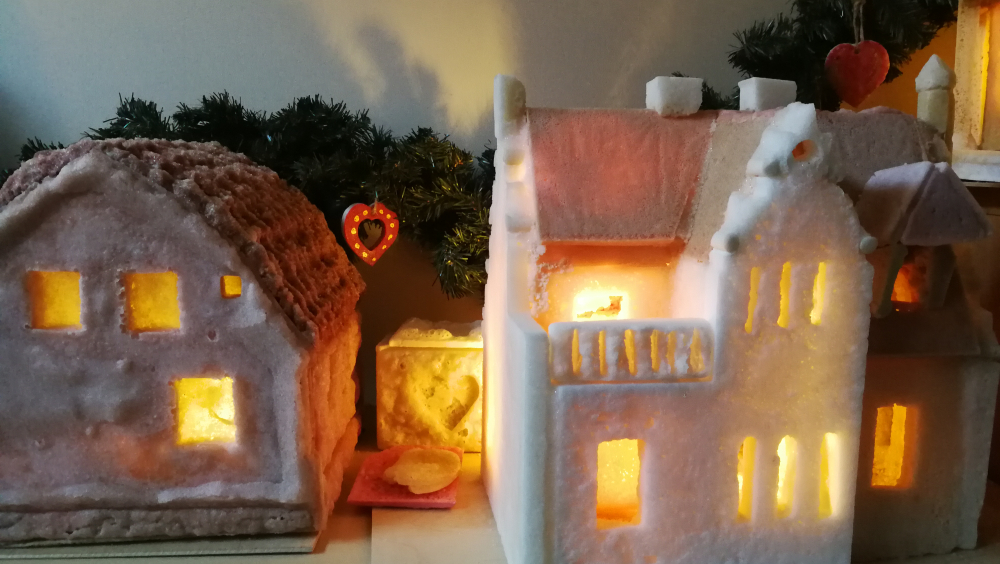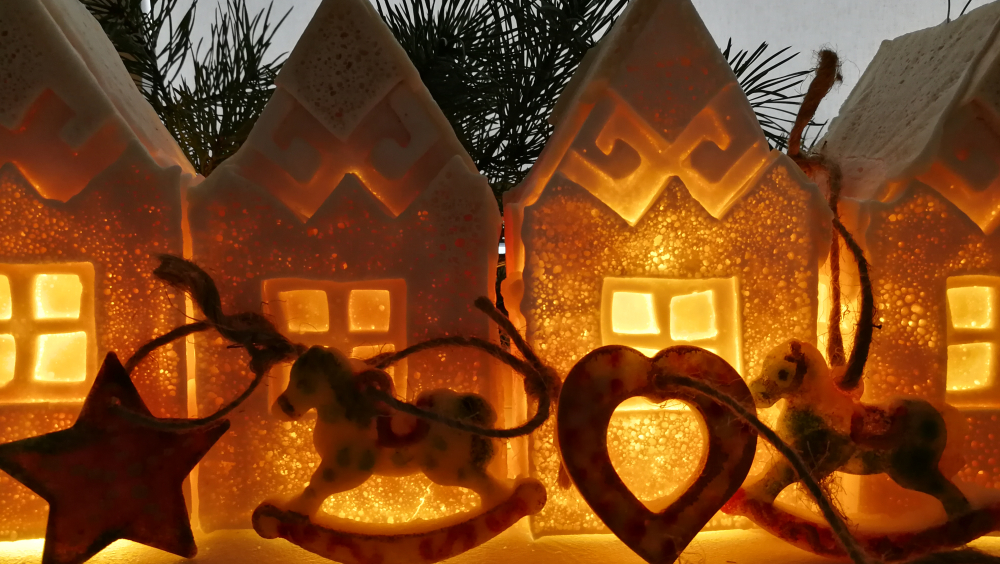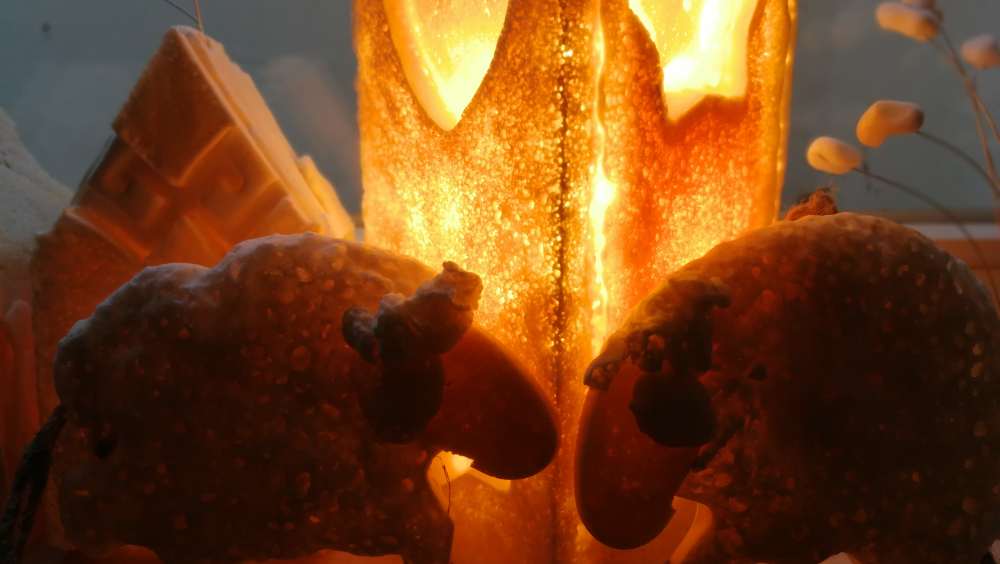A Tale about Sugar - a creative workshop not only for children
The Tale of Sugar is an unconventional creative work using sugar, which presents Lithuanian architectural buildings and classical architectural styles that are prevalent throughout Europe.
Miniature three-dimensional Sugar Houses come to life in the author's stories, which are shrouded in historical legends, events, and Lithuanian folk wisdom. And you know, it all happens while a pot of sugar is boiling ...to the astonishment of inquisitive eyes.
8 tablespoons of sugar and 4 tablespoons of water – is all I need to tell my Sugar Tale - a story of imagination, legends and memories. I boil, mix and tell.
My sugar house collection includes twelve miniature three-dimensional buildings of Lithuanian architecture:
the Kėdainiai Glass Houses (2),
the Švobiškis Evangelical Reformed Church,
the Marijampolė Sugar Factory,
the Kaunas Napoleon House and its “cousin”,
the Kaunas Painter's Villa,
the Kaunas Evangelical Lutheran Church,
the Klaipėda Evangelical Lutheran Church,
the Rusnė pastor's house,
the Vilnius Perkūnas Pagan Shrine and
the Birštonas mineral water pump room.
A house made of sugar? Why not? The technology of sugar moulding was born in the kitchen of my home five years ago, and the idea of architectural buildings came from my knowledge of my native country.
The most pleasant thing is that I can choose which Lithuanian "pearl" I will create in my home. It's like carrying a giant in the palm of your hand, like in the old days. It's like a puzzle game where you put buildings from different parts of Lithuania somewhere new - the City of Sugar. Actually, not all sugar houses can be lifted in the palm of your hand because of their weight - from 1.5 kg to 12 kg
My eye is usually not attracted to the most famous masterpieces of architecture, but those with interesting (or even witty) names and legends; also the ones which are forgotten or even no longer exist.
According to legend, the emperor himself spent the night in the Gothic "Napoleon's House", so I’ve named a similar house in Kaunas Old Town: "Cousin of Napoleon's House"! It turns out that due to lack of data, architects restored the pediment of the "cousin" following the example of "Napoleon's house". Although these buildings are on different streets, I exhibit them side by side. "Napoleon's house and his cousin" - isn't that great?
The Elephant House might sound amusing but that’s not the way I think of it. The 19th century German roof timber warehouse in Klaipėda seemed to residents to look like an elephant split in half. Unfortunately, it has not survived, having been destroyed during World War II.
The Birštonas mineral water drinking pump is popularly called just The Yellow One. It could be optimally cast using the natural colour of raw sugar, yellowish, which was roasted just a touch browner. I don't avoid dyeing if the buildings themselves are colored.
The Houses of Glass are the brightest. They, in reality, look like freshly made candies. In selecting places of worship, I aim to show different denominations, so I still have some way to go.
The mysterious Perkūnas “Zynycia” (mythical temple) was an ancient place of worship for Lithuanians and has been created according to legend and fragments of archeological knowledge.
Rusnė's pastor's house is charming even with its faulty roof and wrought-iron windows which have not seen the occupant for a long time.
Well, my boiled 8 tablespoons of sugar are already bubbling and effervescing. It’s time to stir, stir and pour into the prepared casting mold. And then smell, listen and hear. The mass of sugar, even when poured, still hisses and "tells". We are not going to argue about tastes and smells. Some smell cotton candy, others popcorn. I even once heard "pasta with cheese"! In the eyes of the just curious, I am casting a cute amusement - a little star. But equally, I cast walls, roofs, chimneys, and windows while I am building the little house. It takes a long time to build it - a month or even longer. And I no longer measure sugar in spoonfuls, but in kilograms.
When a hot star has just been cast, the inquisitive smell it and… they want to eat it. No, no, we don't eat anything here! Sugar is a building material. True, I have prepared something edible but it’s a secret. Sometimes I feel like a smart fox that easily lures you in with a mini-sugar treat and then “cuts you a large portion of the culture”.
There is a story, an experience, a legend, a fairy tale in all my Sugar Houses. My favourite story is about a boy who lived in Napoleon's house and listened to his mother's tale about the emperor who lived here and the hidden treasure of his soldiers; how he set out in search of treasure and encountered the devil guarding the chest; how he negotiated with the devil and cunningly got the treasure back. Only I know the end of the tale (plus a few thousand children who have already heard the tale).
I look at my work from different perspectives:
1. The playful and attractive form is primarily for children. Visually my language is understandable to people of any age and nationality;
2. In presenting the buildings of Lithuanian architectural heritage - I give a firm introduction to the knowledge of European classical architectural styles;
3. I present architecture in sugar in a real historical context that is inseparable from the history of the whole Europe or even the world. I also weave in Lithuanian folk tales and fairy tales - thus revealing Lithuanian folklore;
4. I introduce the sugar industry: the period when sugar arrived from foreign countries, the first sugar factory in Lithuania, sugar production nowadays;
5. Only natural raw materials are used to make sugar: sugar, dyes (mostly edible) and water. Unwanted souvenirs are simply dissolved when washing dishes, leaving no waste. All utensils used in the work are reusable.
6. By promoting sugar not as a food product but as a creative tool, I hope to draw attention to our quality of life. This is a 21st century creation that would have been hardly imaginable or possible in earlier times.
Discovering non-traditional means of creativity and promoting Europe's cultural heritage we contribute to the development of a free, creative and responsible person.



